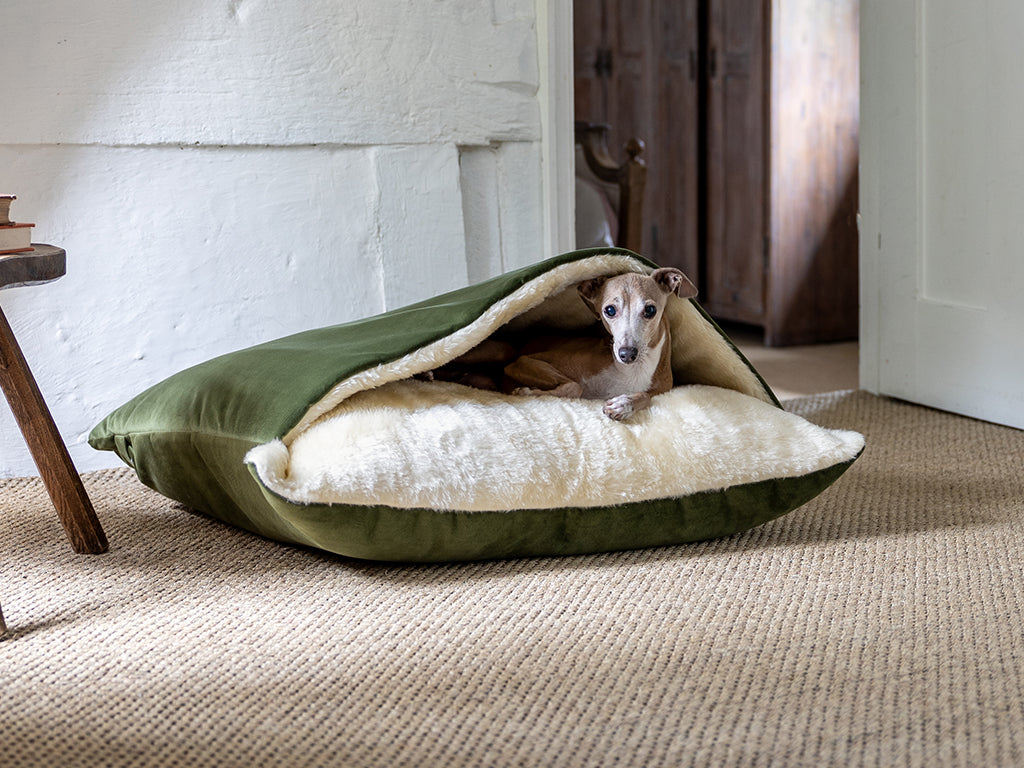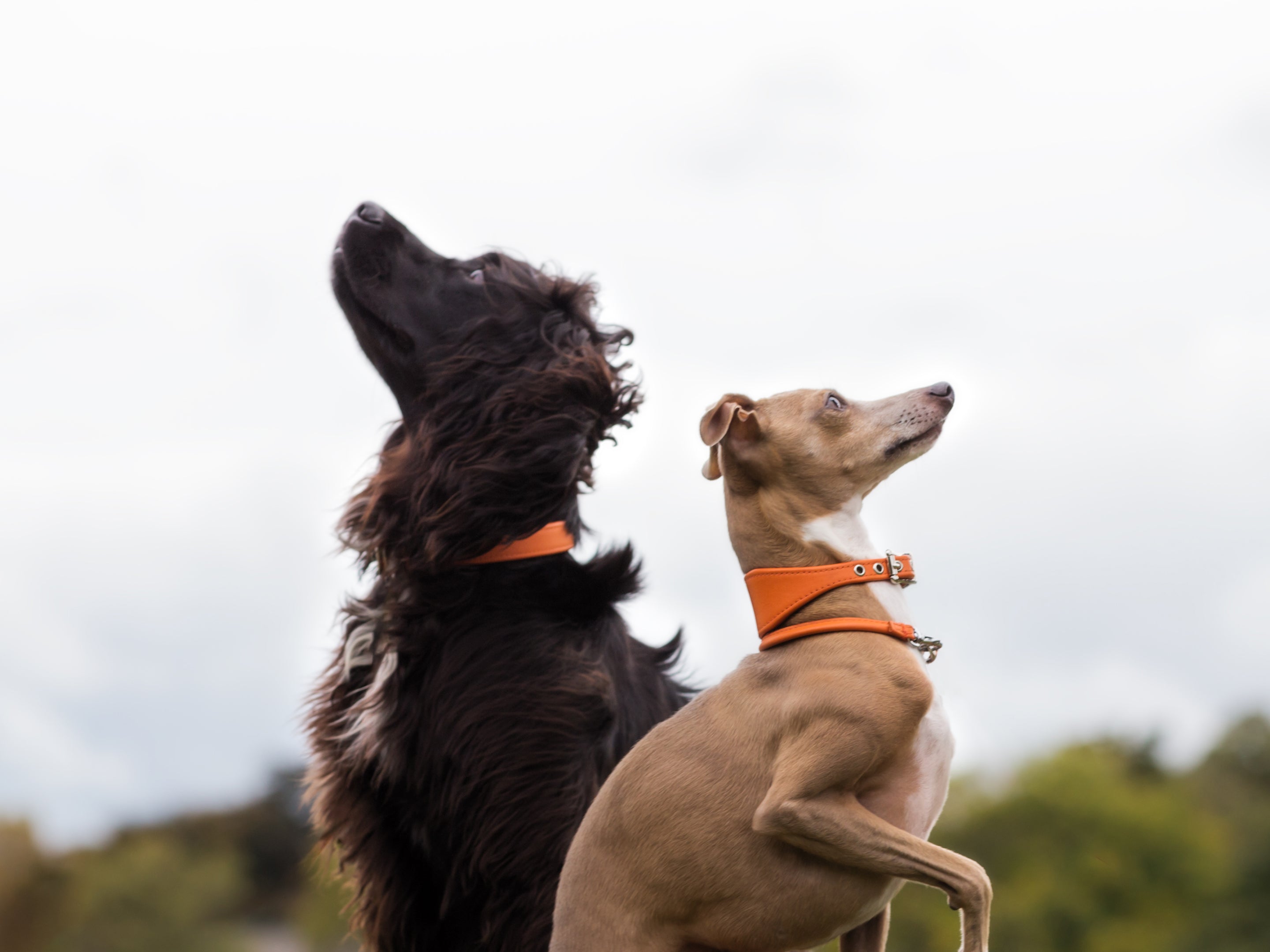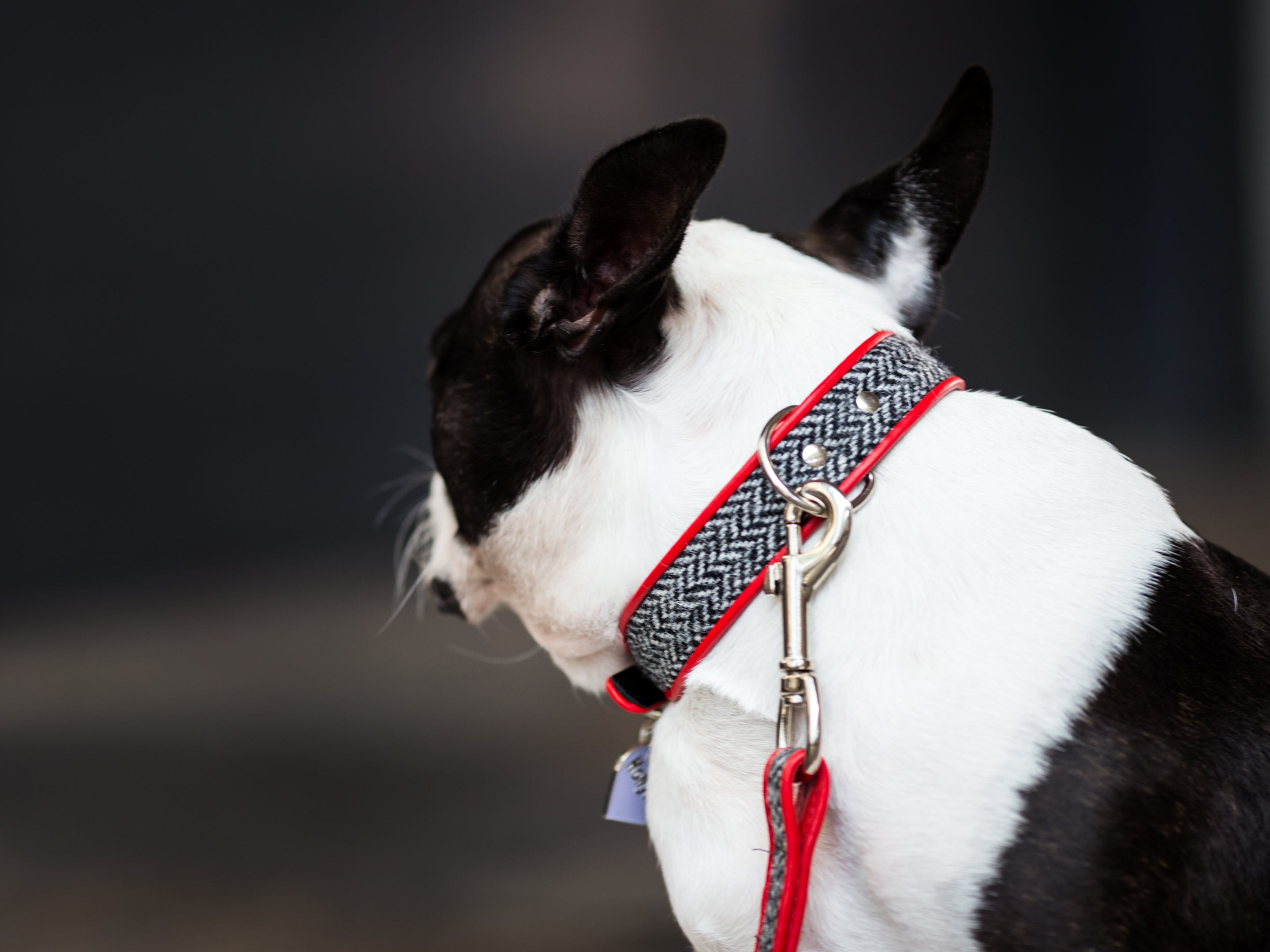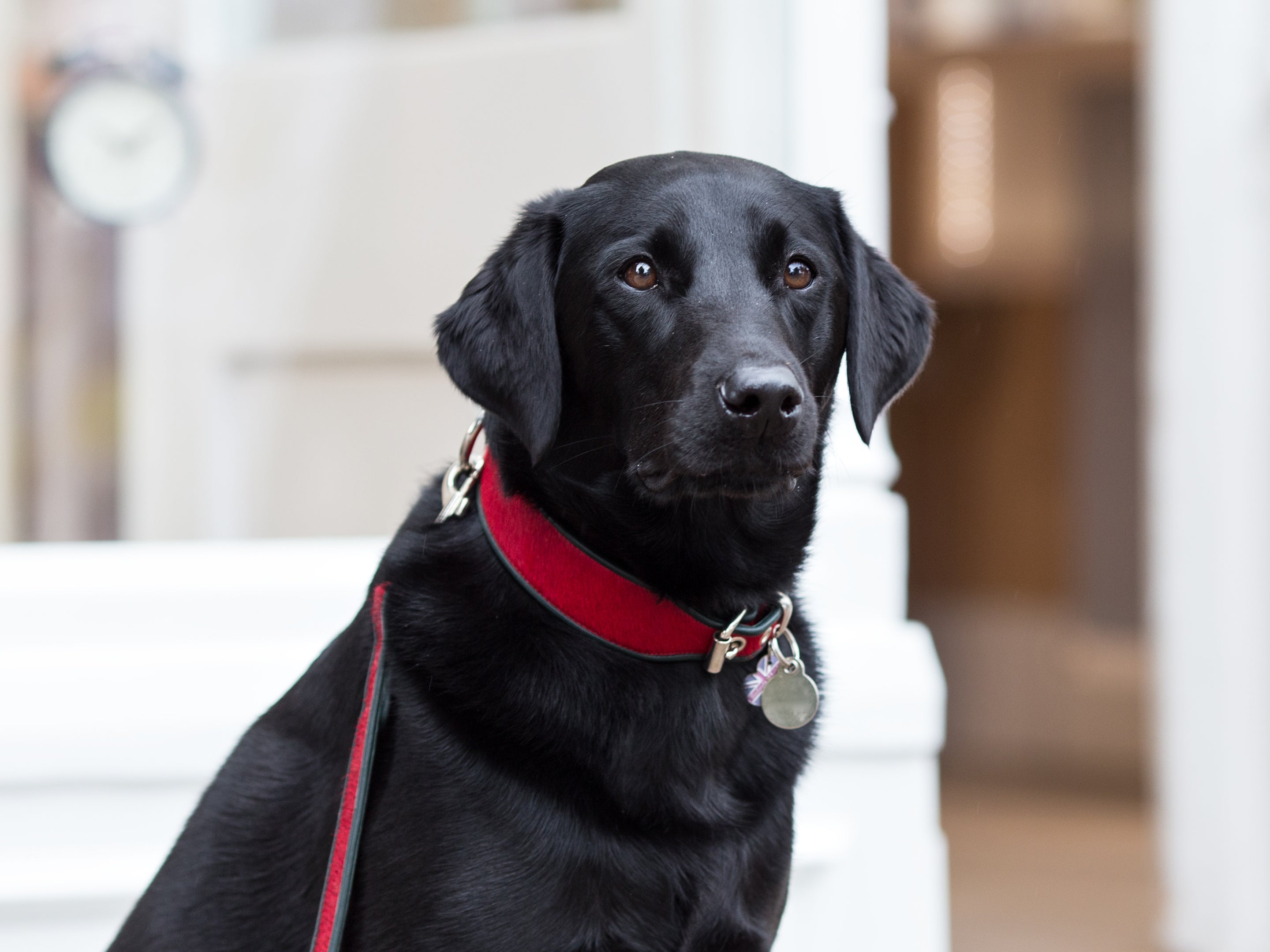Hot tips on planning a holiday with your dog from the UK to France and other EU countries
If you’re travelling with dogs overseas, planning ahead will help to ensure that you have a safe and happy holiday with your dog abroad. We’ve travelled extensively from the UK across Europe and North America with our dogs over the years so we thought we'd share our hot tips on planning smooth and happy travels with your dog overseas.
 Paris by night with Theo
Paris by night with Theo
When we take our own dogs on holiday, we do it knowing that there are going to be some limitations on what we can and can’t do while we're abroad. Sometimes it doesn’t make any sense to take the dogs with us e.g. a weekend in Paris to mooch around museums and art galleries where dogs are not welcome won’t work, whereas a weekend in Paris ambling around the city, enjoying the parks and café culture works a treat.
While pet-friendly accommodation is easy to find, a lot of properties will ask you not to leave your dog in the property unaccompanied so do think through carefully what you want to do on holiday and how you will manage your dog while you are away.
This post is mainly focused on travel with your dog from Great Britain to France and other EU countries but we will try to post about our experiences of travelling further afield soon!
Top tips for travelling from the UK to France and the EU
- Get on top of the legal requirements
- Find a vet overseas before you travel
- Make sure your dog's microchip is working
- Insure your dog for vet cover overseas
- Plan your dog's food - seriously!
-
Planning a dog-friendly transport route from Great Britain
- Eurotunnel
- Ferry crossing
- Flying with dogs - Finding dog-friendly accommodation
- Keeping track of your dog
- Useful links
1. The legal requirements
The legal requirements for travelling with dogs can be a bit daunting but as long as you’re organised (start at least one month ahead of travelling) it’s actually very straightforward. The key requirements for a dog to enter the EU from Great Britain are a working microchip, a current rabies vaccination, and the new Animal Health Certificate. For a full run-down of the legal requirements, see our blog: Travelling with dogs from the UK to the EU & Northern Ireland.
A hot tip on the rabies vaccination - if you plan to travel regularly with your dog, make sure you keep the rabies vaccination current with a booster at the right time (varies depending on the specific jab administered by your vet but usually either one or three years). It means you won't have to re-start the vaccination on your next trip.
2. Find a vet overseas before you travel
It's sensible to have the details of a local vet on hand in case of emergencies.
- Find a local vet at your destination before you go
- Ask your home vet for a complete copy of your dog's clinical history and take it with you (we have our dog's sent by email and save it on our phones)
- Keep the overseas vet's phone number and address on you in case of an emergency
- Book your return tapeworm treatment in advance - see below
Tapeworm Treatment before returning to Great Britain
One of the legal requirements for return to the UK with your dog is a Tapeworm treatment administered by an approved vet. Book this in advance so you don't get caught out - your dog may be refused entry to Great Britain or put into quarantine if you don't comply with the Tapeworm treatment.
- The Tapeworm treatment must be administered by a vet no less than 24 hours and no more than 120 hours (5 days) before you re-enter Great Britain.
- We book our gang to have their treatment 2-3 days before we return - if a dog has a reaction to the treatment then it means they have a chance to recover, plus if there are any delays on the return journey (bad weather and cancelled ferries) we've got a little bit of leeway.
- On short trips abroad, such as weekends away, it’s possible to have the Tapeworm treatment administered by a home vet in the UK before travelling out as long as the timing of the treatment still fits with the requirement that the wormer is given between 1 – 5 days before re-entry into GB.
3. Microchips

Make sure your dog's microchip is working and that the contact details are registered with an approved microchip registry, and that your details are up to date. Your dog's microchip number is recorded on the Animal Health Certificate (your dog's travel document) and if the microchip cannot be read or matched to the record on the AHC your dog may be refused permission to travel.
4. Insurance
Check your pet insurance policy for cover overseas. Not all policies cover your dog for treatment overseas automatically. If your policy does not provide overseas cover, call your insurance provider and ask them about adding it to your policy - this can often be done on a single trip basis.
The types of cover you need to think about are vet fees, advertising & reward for lost dogs abroad, emergency repatriation of your dog if your dog is sick or you are sick, loss of animal health certificate whilst abroad, etc.
5. Plan your dog's food!
Following Brexit, travellers from Great Britain are no longer allowed to take any products that contain meat and/or any meat derivatives into the EU and this includes dog food and treats containing meat or meat derivatives i.e. most dog food and dog treats. Milk and any milk derivatives are also banned.
There is one exception and that is where a special pet feed is required for medical reasons, and then only if weighing less than 2 kilograms, the product does not require refrigeration before opening, and the food is a packaged proprietary brand product for direct sale to the final consumer, and the packaging is unbroken unless in current use.
So, unless your vet is able to confirm in writing that your dog needs a special food for medical reasons you cannot take dog food or treats containing meat and/or meat derivatives to the EU.
This may not be a big problem if you do not have a long onward journey from your point of arrival in the EU as you could head straight to a supermarket to stock up on pet food. However, if you do have a long onward journey then a plan is required:
- Find and order a vegan kibble to be delivered to you in Great Britain before you travel - for dogs with sensitive tummies, start feeing it to them in small quantities so that their tummies get used to it;
- Order your regular dog food from an online pet store in the EU to be delivered to your hotel/accommodation in advance of your arrival overseas; and
- Travel with the vegan kibble in hand luggage from Great Britain so that your dog doesn't have to go too long without food.
Why vegan kibble? Because there is no meat or meat derivatives nor any milk or milk derivatives in the food and kibble is dry food and therefore easier to feed on the go than wet food in pouches or tins. Water should also be made available to your dog regularly while travelling.
There are heaps of online pet stores across the EU to order your dog's regular food for delivery to your accommodation overseas. Sites such as Zooplus (www.zooplus.com) and Amazon's sites in the relevant countries offer a huge range of different dog foods and can deliver to any country in the EU.
6. Dog-friendly transport routes from Great Britain to France and the rest of the EU
There are two main options to take your dog from Great Britain to the EU and back: Le Shuttle (Eurotunnel) or ferry crossing. The arrival point to enter the EU must be an official designated Travellers' Point of Entry (TPE) which all of the major passenger routes for Eurotunnel and the major ferry comapnies are.
Return flights from the UK to the EU with a dog only work if your dog is happy to fly as pet cargo as the UK will not allow any regular arilines operating scheduled flights to fly a dog in the cabin directly into the UK. See our blog on Flying with Dogs for more info.
Le Shuttle (Eurotunnel) from Folkestone to Calais
Le Shuttle (Eurotunnel) (www.eurotunnel.com) is a fabulous option for travelling into Europe with dogs from the South of England because it's quick and one can stay with the dogs throughout the crossing. Eurotunnel is the train that cars drive onto to cross the Channel from Folkestone to Calais and is not the same as Eurostar which goes from London St Pancras to Paris Gare Du Nord for foot passengers only and has a no dogs policy.
Things to know about travelling with dogs on Eurotunnel:
- Dogs must be booked in advance and a maximum of 5 dogs per car are allowed
- Costs start from GBP £22 per dog each way
- Departing the UK, check-in is easy - "drive through" check-in for dogs is available at most times so you don't even need to leave your car
- Coming back to the UK, head to the Pet Reception to check your dog-in and allow an extra 45 minutes for check-in
- Pet exercise areas are available on both sides of the Channel
- Dogs must stay in the car on Eurotunnel and you can stay with them
Ferry crossings from Great Britain to France and other EU countries
Dogs can travel on the main passenger ferry crossings from GB to continental Europe and Republic of Ireland and Northern Ireland whether you are booked with a car or as a foot passenger.
Ferry comapnies have started to offer better pet-friendly options in the last few years with pet-friendly cabins, kennel spaces, and pet lounges! We loved our journey from Dublin to Holyhead with Stena Line with our pet-friendly cabin!
Different ferry companies have different pet travel policies for different ferry routes and individual vessels so check with the ferry service you are planning to use before booking.
Most car ferries allow you to leave a dog in the car - which might be suitable in cool weather on short journeys but not an option in very hot weather or on very long ferry journies. Thankfully, the major ferry companies have upped their game when it comes to pet travel options with pet-friendly cabins, pet lounges, accessible kennels, and exercise decks now being offered on various routes.
- Dogs must be booked in advance for a ferry crossing from the UK
- Costs of dog travel vary depending on the journey - from free (e.g. Stena Line Dublin to Holyhead) to around £15 per dog each way on a Cross-Channel ferry, or for a longer journey to Spain in the region of £90 return which includes secure kennel space
- Departing the UK, check-in is really straightforward for the shorter Channel crossings and done from your car whereas the longer crossing may advise you to check-in around 90 minutes earlier than usual to complete the pet check-in process in time
- Coming back to the UK, check-in depends on the specific port you are departing from
Notes on the welfare of your dog if travelling in the car on a ferry
If your dog is staying in your car on a ferry crossing, you may not be able to check on your dog during the crossing even if the ferry is delayed and you are stuck on the water for hours. This has significant implications for the wellbeing of your dog and you should prepare accordingly for the worst case scenario:
- Exercise your dog before the ferry crossing so that they are not full of energy
- Make sure your dog has access to water in a spill proof container for the whole crossing
- Make sure your dog has a comfortable bed to settle down in
- De-activate the car alarm as car alarams go off all the time on ferry crossings
- Leave car windows open to ensure good ventilation
- If your car is hot inside when the air conditioning and engine are turned off, do not leave your dog in the car - have them moved to an onboard kennel
We never use the ferries to cross the Channel with our dogs in the summer. We only use the ferries in the cold months. The temperature inside a stationary car that has been travelling for miles in hot weather can rocket significantly as soon as the air conditioning is turned off. It's another reason we prefer to use the Eurotunnel - there's no danger of the dogs over-heating in an unattended car.
Flying with dogs
Check out our blog on Flying With Dogs. In summary, you can fly small dogs out of the UK in the cabin, but you cannot return to the UK with a dog in the cabin. if flying with a regualr airline on a scheduled flight Dogs of all sizes can be flown as pet cargo in the hold in and out of the UK.
When flying with our dogs we quite often travel to an EU city such as Dublin or Paris, and then have return flights booked from there so that they can fly in the cabin with us.
Theo flying from Paris to Venice!
Note that not all dogs will cope with flying, especially if they're going as cargo in unaccompanied. Some breeds are not accepted on flights for medical reasons. Think very carefully before flying your dog as pet cargo.
For smaller dogs (under 8kg) a less stressful option for the dog is usually to travel to the EU via Eurotunnel or a ferry crossing and drive to one of the major airports to catch a flight further afield with your dog travelling in the cabin with you. For larger dogs sadly the only option is to fly as pet cargo unless you fly with your dog on a privately chartered jet!
7. Dog friendly accommodation
It’s really easy to find dog-friendly accommodation in the EU, particularly in France and Switzerland. When we travel overseas with the dogs we book our hotels in advance for every planned stop-over to avoid any potential traumas while we're away.
 Tino and Charley making themselves at home at our stop-over hotel in Troyes, France on the way to Meribel
Tino and Charley making themselves at home at our stop-over hotel in Troyes, France on the way to Meribel
We use the major travel portals to search for dog friendly hotels as they allow you to filter results to show ‘pet friendly’ properties. www.booking.com, www.expedia.co.uk, www.hotels.com and www.lastminute.com all have a pet friendly filter – plus they usually have some very good deals on a huge selection of hotels from bargain basement to lush and decadent. Some hotels in continental Europe allow dogs to stay at no extra charge - which is almost unheard of here in the UK. Otherwise be prepared to pay anything from EUR €10 - €35 per dog.
8. Keep track of your dog
Possibly the most common nightmare scenario for any dog owner is losing their dog and losing your dog while abroad in a foreign country would be even more of a nightmare.
Common dog sense really needs to apply - keep your dog on the lead and only let them off if you are 100% sure it is safe to do so. There's also some practical things that you can do to maximise the chances of your dog's safe return if the worst does happen:
- As above on microchips, make sure your dog's microchip registry has up-to-date contact details for your dog
- Make sure your dog is wearing an ID tag at all times with your phone number on including the UK country code e.g. +44 161 848 8702, not just 0161 848 8702 - have new tags engraved before you travel if necessary
- Fit a GPS tracker to your dog’s collar that also has a smartphone app that can track your dog’s location in real time - they are available to buy on the internet. Please note that an Airtag or similar is not a full GPS tracker!
9. Useful links
Official government guidance on pet travel:
- Pet Travel Scheme helpline, telephone: 0370 241 1710 (charges apply) or email pettravel@apha.gov.uk
- UK government: Taking your pet dog abroad
- Northern Ireland: Travelling with pets
- EU guidance: Non-commercial movement from non-EU countries
Transport routes from Great Britain to France and other EU countries:
Dog-friendly accommodation:
- www.mrandmrssmith.com
- www.hiphotels.com
- www.booking.com
- www.expedia.co.uk
- www.hotels.com
- www.lastminute.com
More travel info from our blog:
- Travelling with dogs from the UK to France and other EU countries - the legal stuff
- Theo’s mad road trip: Manchester - London – Paris – Venice - and back again
- Flying with Dogs
Bon voyage!














